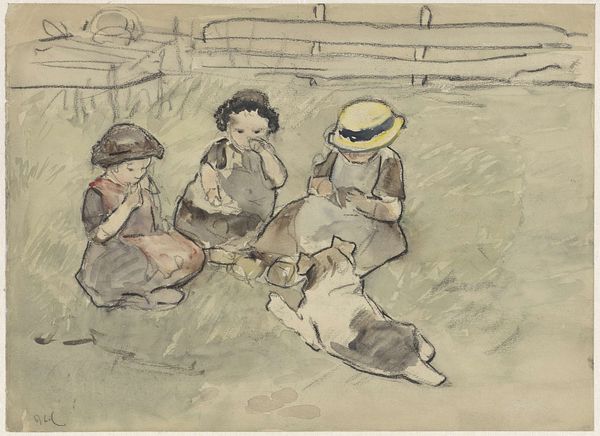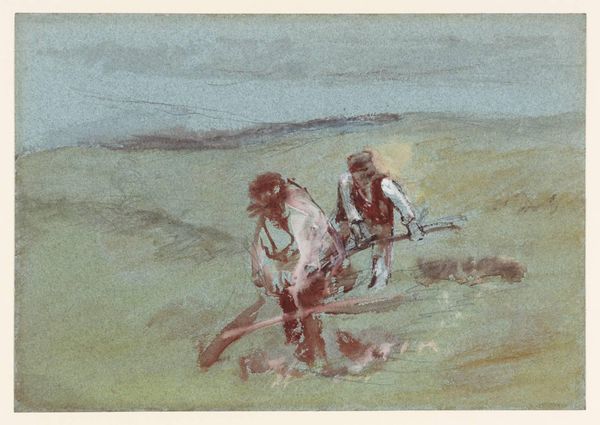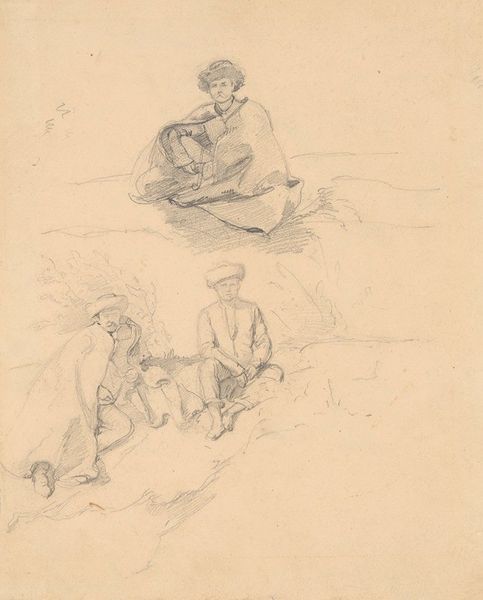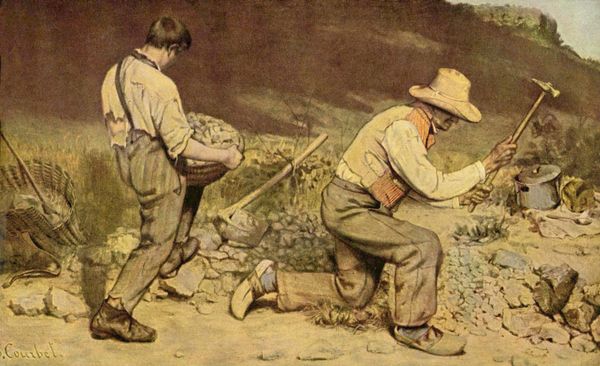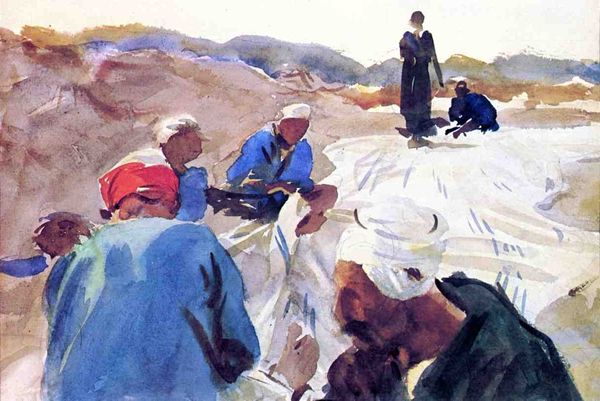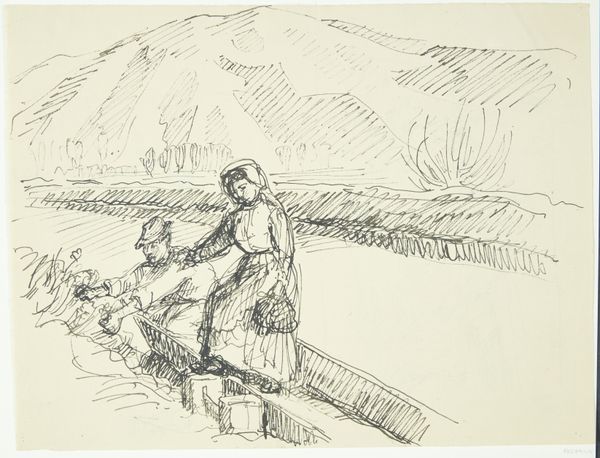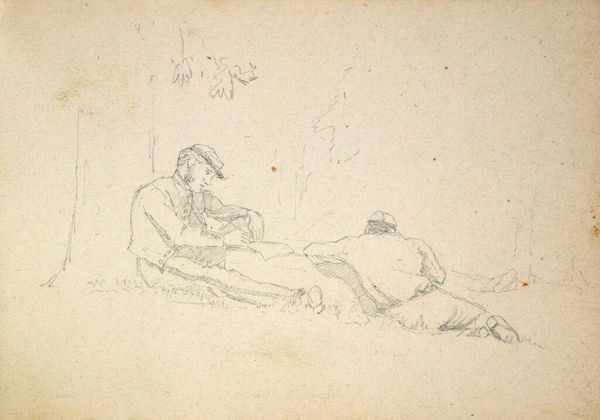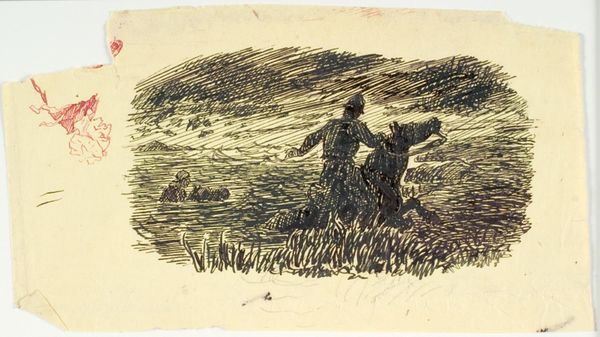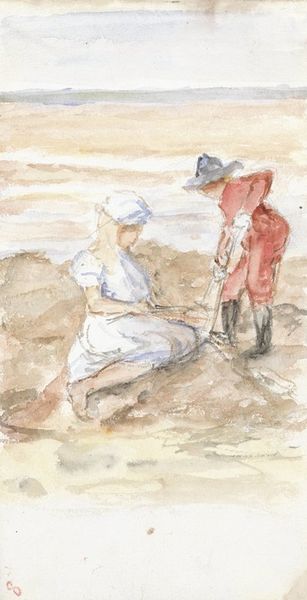
Copyright: Public domain
Curator: This work, titled "The Picnic," was completed in 1891 by Camille Pissarro. It's currently held in a private collection. Editor: What immediately strikes me is the way the circular format encloses the scene, creating a sense of intimacy, of shared space almost like a lens focusing on the figures grouped around the blanket. Curator: The choice of watercolor, pencil, and coloured pencil creates a hazy, dreamlike atmosphere, don’t you think? Pissarro captures the mundane elevated through the fleeting qualities of Impressionism. Picnics hold symbolic weight as images of leisure, but this gathering speaks more to shared meals and moments of sustenance as simple sustenance in the French countryside. Editor: Absolutely. And it is through the construction of the composition that one observes these subtleties. The figures are arranged loosely, each absorbed in their activity, yet linked by color. The blues of their work clothes mirror the washes in the background creating this cohesion. Note the application of the colours that do not aim for a photographical correctness, as if wanting to create and register a mental landscape, not simply an outdoor scene. Curator: And even in the brushstrokes, a sense of community. The soft, blending colors evoke not just the light of a summer day but perhaps the melding of lives, the shared history held within a community connected through generations of agricultural work and labor in the same locations. It captures both intimacy and distance within a social ecosystem of belonging. Editor: Yes, it's a complex interplay. At first glance, there’s something almost unfinished or spontaneous. But observe how those washes, scribbled lines, the bare suggestion of form communicate the weight of social history and of these individuals with a delicate touch. This allows the narrative and feeling of the painting to develop through observation, demanding that we slowly unfold its deeper meaning over time. Curator: Indeed. It invites the viewer to participate, not just as a witness, but almost as a member of that communal experience. Pissarro presents both a landscape and a psychological scene, the social bonds depicted at play adding an indelible charm. Editor: I agree, seeing this piece as a complex investigation of painting's capacity to represent memories, lived experiences, while allowing color and texture to shape meaning within it is something remarkable.
Comments
No comments
Be the first to comment and join the conversation on the ultimate creative platform.


